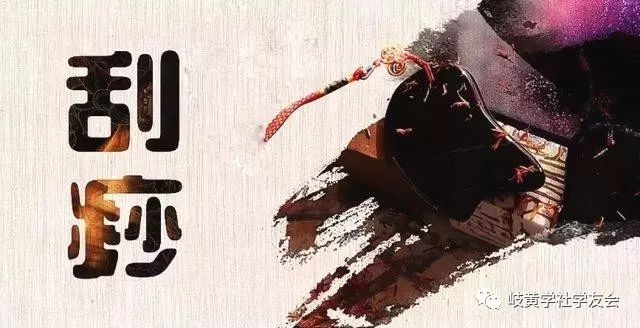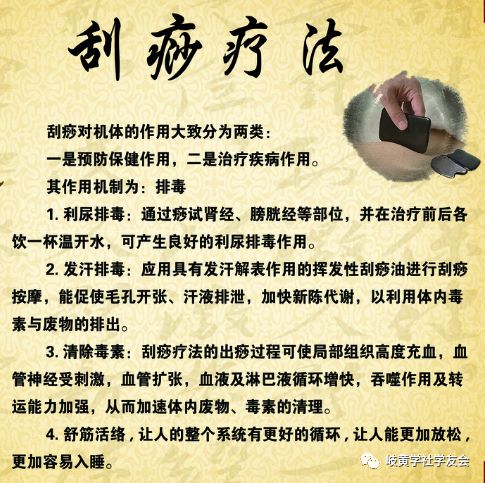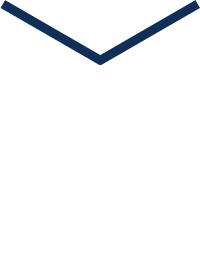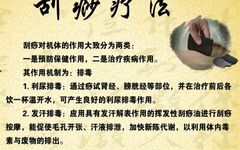Qi · Huang · Learning · SocietyMaking Traditional Chinese Medicine More Beautiful | More Interesting | More Relevant to Life
What is Gua Sha
Gua Sha is guided by the theory of meridians and acupoints in Traditional Chinese Medicine (TCM). It involves using specialized Gua Sha tools and corresponding techniques, applying a certain medium, and repeatedly scraping and rubbing the skin surface to produce “Sha” changes, such as red millet-like spots or dark red bleeding points, thereby achieving the effect of invigorating blood circulation and dispelling “Sha”.

Due to its simplicity, convenience, low cost, and effectiveness, Gua Sha is widely used in clinical practice and is suitable for both medical and home care. It can also be combined with acupuncture, cupping, and bloodletting techniques to enhance the effects of invigorating blood circulation, dispelling pathogens, and detoxifying.
Gua Sha releases pathogenic Qi and detoxifies. The appearance of “Sha” invigorates blood circulation and eliminates pathogenic factors, which is referred to as “Xie”. “Bu” refers to supporting the righteous Qi. After Gua Sha, the meridians are quickly unblocked, providing cells with oxygen and nutrients, resulting in a significant tonifying effect.
Therefore, the characteristic of Gua Sha is that “Xie is Bu” and “Tong is Bu”. However, if too many areas are scraped for too long, leading to excessive pore opening and excessive “Sha” production, it results in “Xie as Xie”.
Based on the dialectical relationship of Gua Sha’s tonification and purging, one can correctly choose the appropriate techniques to achieve the best results from Gua Sha.

The tonifying and purging effects of Gua Sha depend on the meridians and acupoints being scraped, as well as the functional state of the body. The meridians and acupoints have a bidirectional regulatory effect.
Some acupoints have relative specificity for tonifying deficiency or purging excess, such as Neiguan (Pericardium 6), Zusanli (Stomach 36), and Baihui (Governing Vessel 20).
When gastrointestinal function is weakened, and there is spleen Qi deficiency with diarrhea, scraping Zusanli with a Gua Sha board can tonify the spleen and stomach, benefit Qi, and stop diarrhea, slowing down gastrointestinal peristalsis;
When there is constipation or gastrointestinal accumulation, scraping Zusanli can eliminate accumulation, unblock the meridians, treat abdominal distension and constipation, and promote gastrointestinal peristalsis.
Even though the same acupoint is scraped, the effects are completely opposite. The decisive factor is whether the gastrointestinal system is in a suppressed or excited state at that time.
Tonification Method
The tonification method involves light pressure and slow speed. Short-term tonification scraping can stimulate the body’s righteous Qi, restoring weakened functions to normal. Clinically, it is often used for elderly, weak, chronically ill, severely ill, or underweight patients, as well as areas with thin subcutaneous fat and muscle, such as the sternum, anterior tibia, and dorsum of the foot.
Purging Method
The purging method involves heavy pressure and fast speed, which can expel pathogenic factors and restore hyperactive functions to normal. In principle, it is suitable for young, strong individuals with new or acute illnesses or those with robust constitutions. However, in practice, to reduce pain during Gua Sha, the purging method is generally not used.
Balanced Tonification and Purging Method
Balanced Tonification and Purging Method
The balanced tonification and purging method, also known as the balanced scraping method, includes three scraping techniques. The first involves heavy pressure and slow speed, the second involves light pressure and fast speed, and the third involves moderate pressure and moderate speed. This method is widely applicable to all populations except those with weak constitutions. The specific application of the three techniques can be flexibly chosen based on the patient’s condition and constitution.
Among them, the technique with moderate pressure and speed is easier for the patient to accept. For sensitive areas, the technique with heavy pressure and slow speed can reduce pain during scraping.
The balanced tonification and purging method lies between the tonification and purging methods and is often used for health maintenance in normal individuals or for treating conditions with both deficiency and excess.
For the same individual, different techniques should be applied to different body parts. In areas with thin subcutaneous fat and muscle, such as the sternum, anterior tibia, sacral region, dorsum of the hand, and dorsum of the foot, tonification scraping should be used regardless of constitution. In areas with abundant muscle, such as the shoulders and buttocks, the balanced tonification and purging method can be applied.


Considerations for Gua Sha
1. Understand the condition, apply dialectical treatment, investigate the cause of the illness, and determine the scraping area.
2. Choose techniques based on the patient’s deficiency or excess, cold or heat, exterior or interior, and yin or yang.
3. Pregnant women should avoid scraping the abdomen, lower back, and sacral area.
4. Children with unclosed molars should not undergo Gua Sha.
5. Avoid scraping areas with infected sores, ulcers, scars, or tumors.
6. For patients with varicose veins in the lower limbs, scraping should be done from bottom to top with appropriate techniques.
7. Patients with low blood volume (prone to bleeding) or critically ill patients should be cautious with Gua Sha.
8. Avoid facing electric fans during Gua Sha and try to avoid wind.
9. Do not use alternative tools for Gua Sha (such as coins, plastic crystals, ceramics, or other oils).
10. The head and face do not require oil application; for health maintenance, scraping can be done with clothes on, while for treatment, specialized Gua Sha oil must be used.
11. After scraping, wait for the “Sha” to recede before scraping again; during regular maintenance, tonifying scraping can be done to enhance the effect of “Sha” removal.
12. During Gua Sha, a certain amount of capillary bleeding may occur, which seeps into the surrounding tissues and is then absorbed. This is a method to increase resistance. For those afraid of pain, taking a hot bath or applying heat before Gua Sha can reduce discomfort.
13. After Gua Sha, the sweat pores will be dilated; avoid cold showers within half an hour, but warm showers are acceptable, and scraping while showering is fine.
14. Drink a cup of hot (warm) boiled water after Gua Sha to replenish the fluids consumed and promote metabolism, accelerating the elimination of metabolic waste.
15. To eradicate stubborn conditions, in addition to Gua Sha and detoxification (consuming cleansing foods), targeted conditioning (such as the Le Duo Shou series and the Di Fen Si series) is also necessary.
16. There is no need to force the production of “Sha” during Gua Sha.
17. For health maintenance Gua Sha, there is no need to apply oil or produce “Sha”; scrape each meridian from head to toe 8 times, for 3-10 minutes daily, to naturally achieve health benefits and longevity.
Tools and Positioning: Gua Sha boards are made from water buffalo horn, shaped rectangularly with rounded edges. For back scraping, the patient should lie face down, while for shoulder scraping, the patient should sit upright. Scraping may result in purple bleeding points.
Indications: Common cold, fever, heatstroke, headache, gastrointestinal diseases, stiff neck, shoulder periarthritis, lumbar muscle strain, muscle spasms, rheumatic arthritis, and other conditions.


Contraindications for Gua Sha
Pregnant women’s abdomen, lower back, and sacral area, as well as women’s nipples, should not be scraped.
Patients with leukemia or low platelet counts should be cautious with Gua Sha.
Patients with heart disease experiencing heart failure, renal failure, liver cirrhosis with ascites, or severe systemic edema should avoid Gua Sha.
For patients with varicose veins in the lower limbs, scraping should be done from bottom to top using light techniques.
Any skin with ulcers, injuries, or inflammation at the treatment site is not suitable for this therapy. Gua Sha is also not recommended for patients recovering from severe illness, those with Qi deficiency and blood deficiency, or in states of hunger or fullness.
(Warm reminder: This article is for reference only. TCM emphasizes dialectical treatment, alleviating symptoms without shortcuts. Individual conditions vary, and patients should consult a physician to find the most suitable treatment method for themselves. Some images and text are sourced from the internet, and copyright belongs to the original authors. Please inform us if there is any infringement.

Special reminder: A beautiful day begins! We hope the articles from the Qi Huang Learning Society bring you a good mood for the day. If you like the article, don’t forget toclick the “Looking” button at the bottom right of the article or share it in your friend circle!Due to network limitations, follow me for more! May you become your own divine doctor.

